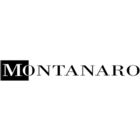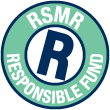


Global

sriServices SRI Style - Sustainability Select
(Offshore)
Launched in April 2018, the Montanaro Better World fund is categorised within the IA Global sector. The fund aims to hold between 50 and 55 holdings with each investment having a target portfolio weight of 1%-3%. Originally launched as a Dublin domiciled OEIC, an onshore version of the strategy was launched in January 2020.
Mark joined Montanaro as Head of Research in March 2014 and is responsible for the whole Analyst team as well covering Financials as a senior Analyst and he also co-manages the Montanaro Better World Fund.
The first four years of Mark’s career were spent with Bankers Trust Asset Management as a UK Portfolio Manager managing funds on behalf of UK Pension funds. Mark joined Nomura Asset Management in 1990 where he worked for 17 years, first as a European equities Portfolio Manager for US Pension funds and then as Head of Research. In this role, he built a team of 14 in house sector Analysts in London and New York. In 2007, Mark joined Fidelity Worldwide Investments in London as Director of European Equity Research. Mark helped to manage and coach the buy side Analyst team and introduced valuation models still used today.
Please click on the 'Fund Data' button above.
The first stage of the process is to determine whether the company is making a positive impact (see Responsible Process section). If the company passes the first stage, then the quality screen is applied to filter down the global universe (circa twelve thousand companies) from the highest quality (AAA) to the lowest quality (D) with a total of six categories (AAA, AA, A, B, C, D). A proprietary screen to monitor criteria covering profitability, growth, leverage, cash and volatility is applied. The screen also provides information about stock liquidity, valuation, momentum, and allows searches by sector, region, country, company size, and company description. Meeting company management and regular sites visits form a crucial part of the decision-making process. As part of company due diligence, analysts take references from industry contacts, suppliers and customers. Having identified an interesting company, the analyst then completes a qualitative checklist. The analyst scores a company based on a wide range of criteria. An aggregate score is produced (out of 100; 55 is the pass mark) which reflects the quality of the business and its management. If the company passes this stage, the analyst will complete a corporate governance checklist and an environmental & social checklist as well. The output from the first two stages of the process is an ‘Impact’ approved list.
Once a stock has been approved, the analyst builds a discounted cash flow model for the company providing an economic and financial understanding of the business. The primary focus is the cash flow return on operating assets for the quality assessment. Once this is completed, the analyst will produce a target price for the share of equity. Alongside this, a recommendation is placed on the stock, reflecting the analyst conviction. This is either a strong buy, buy or hold.
In terms of portfolio construction, target weightings vary from 1% to 3% with a one in, one out approach applied, with new ideas having to be better than existing holdings before being implemented. Winners are run but top sliced at 5% weighting with no sector or country weighting restrictions. The fund prides itself on holding names that would not be found in peer funds providing diversification in portfolios.
Country allocation is a by-product of the bottom-up stock selection process, although an eye is kept on the composition of the fund versus the benchmark.
The fund invests in six impact themes, namely environmental protection, green economy, healthcare, innovative technologies, nutrition and well-being. Within each main theme there are also subthemes. The themes have been selected due to their breadth as well as their longevity with the United Nations Sustainable Development Goals framework linked to the six themes.
The analysts are responsible for understanding the positive impact assessment of a company (i.e., is the company making a positive impact?) by assessing its products & services, its thematic revenue and engagement.
Once the impact assessment has been completed, the analyst then presents this to the Sustainability Committee who debate and ultimately vote as to whether the company can be included in the fund. If the company passes the vote, then the analyst moves on to the quality stage where financial modelling takes place as well as the proprietary quality checklist which incorporates ESG. The analyst then presents this to the Investment Committee which comprises senior portfolio managers. They are the gate keepers to the approved list as only stocks on the approved list can be held in portfolios. For Better World, this is the Impact Approved List.
Montanaro conducted a search to locate a third party to assist with the calculation of impact. Independence was a key requirement and Impact Cubed was selected and they provide an annual review of the fund with the findings located in the annual impact report. Impact Cubed look at the fund from a variety of metrics, the underlying holdings versus the SDGs, as well as fourteen sustainability metrics for the fund versus the benchmark with a spider gram output. The fourteen-sustainability metrics cover the environment, governance, products & services and society, each with sub-categories. The output of Impact Cubed is complemented with the impact assessment undertaken by the analysts in the team where KPIs are assigned to be monitored for the holding.
An impact report is published each year covering strategy and performance, impact assessment and engagement and voting.
The fund may not invest in companies with more than 10% revenue exposure to the manufacturing or supply of weapons, tobacco, gambling, pornography, alcohol or any other areas deemed not to meet the Investment Manager’s ethical standards.
The Montanaro Better World Fund is a small mid-cap focused global fund that invests in companies which make a positive impact on society or the environment.
Originally launched as a Dublin domiciled OEIC, an onshore version of the strategy was launched in January 2020. The fund follows the same quality growth approach as other strategies at Montanaro with the key differentiator being the addition of an impact assessment. Montanaro sought external counsel from the United Nations as to understand how best to approach this and it is interesting they have not pursued solely the UN Sustainable Development Goals (SDG) but instead derived their own six high level themes that incorporate subthemes. The proprietary impact assessment that is undertaken by the analysts for each company does require linkage to an SDG, however a target or indicator will not be required in all instances as these are not always applicable to finance.
For any stock to be included it needs to demonstrate impact with the proprietary assessment completed which is then presented to the Sustainability Committee. Although internal in composition, members are from across the business with an interest in impact and sustainability. If a company is approved from an impact perspective it is assessed from a quality perspective and then presented to the Investment Committee, who are all portfolio managers. If this stage is passed, then the stock becomes part of the impact approved list. Third party oversight for impact is provided by Impact Cubed with an Impact Report published annually.
Important Notice
This document is aimed at Investment Professionals only and should not be relied upon by Private Investors. Our comments and opinion are intended as general information only and do not constitute advice or recommendation. Information is sourced directly from fund managers and websites. Therefore, this information is as current as is available at the time of production.
Rayner Spencer Mills Research Limited is a limited company registered in England and Wales under Company. Registration Number 5227656. Registered Office: Number 20, Ryefield Business Park, Belton Road, Silsden, BD20 0EE. RSMR is a registered trademark.